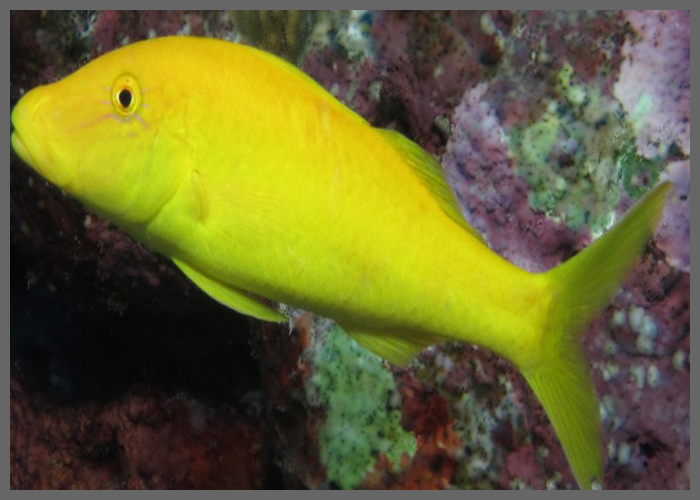
 Quick Facts
Quick Facts
 Scientific Name :
parupeneus cyclostomus
Scientific Name :
parupeneus cyclostomus
 Max Size :
20
Max Size :
20
 Color Form :
Yellow
Color Form :
Yellow
 Diet :
Carnivore
Diet :
Carnivore
 Water Temperature :
72-78
Water Temperature :
72-78
 Water Salinity :
35ppt
Water Salinity :
35ppt
 pH Level :
8.1-8.4670L
pH Level :
8.1-8.4670L
 Minimum Water Tank Capacity :
670L
Minimum Water Tank Capacity :
670L
 Population Trend :
Not Evaluvated
Population Trend :
Not Evaluvated
 Description
Description
Dorsal spines (total): 8; Dorsal soft rays (total): 9; Anal spines: 1; Anal soft rays: 7. Diagnosis: Pectoral rays 16 (rarely 15 or 17). Gill rakers 6-7 + 22-26 (total 29-33). Body depth 3.25-3.8 in SL (body deeper with growth); head length (HL) 2.85-3.1 in SL; snout long, its length 1.61.8 in HL; eye small, the orbit diameter 5.3-8.95 in HL (SL 118-392 mm); barbels very long, 1.15 in HL to longer than head; longest dorsal spine 1.5-1.7 in HL; penultimate dorsal ray 1.1-1.2 in length of last dorsal ray; pectoral-fin length 1.5-1.7 in HL; pelvic-fin length 1.35-1.55 in HL. Color of large adults yellowish gray, the edges of the scales bright blue except ventrally, the edges more broadly blue posteriorly; a large, hemispherical, saddle-like, yellow spot covering most of upper half of caudal peduncle; region around eye yellow with radiating short narrow blue bands; caudal fin with longitudinal blue bands; second dorsal and anal fins with narrow oblique blue bands; a second smaller color phase entirely yellow, the dorsal peduncular spot sometimes apparent by being brighter yellow than rest of body The Yellow Goatfish is also referred to as the Yellowsaddle Goatfish, or Goldsaddle Goatfish. It is a solid golden-yellow color from head to tail. A 180 gallon or larger aquarium with large areas to swim, and some hiding places is required. The young Yellow Goatfish may sift the sandy bottom of the tank in search of invertebrates to eat. The older Yellow Goatfish is prone to eat small crustaceans, fish, and worms. The diet should consist of a variety of meaty items fed at least four times daily
 Threat to Human
Threat to Human
 IUCN Red List Status
IUCN Red List Status
